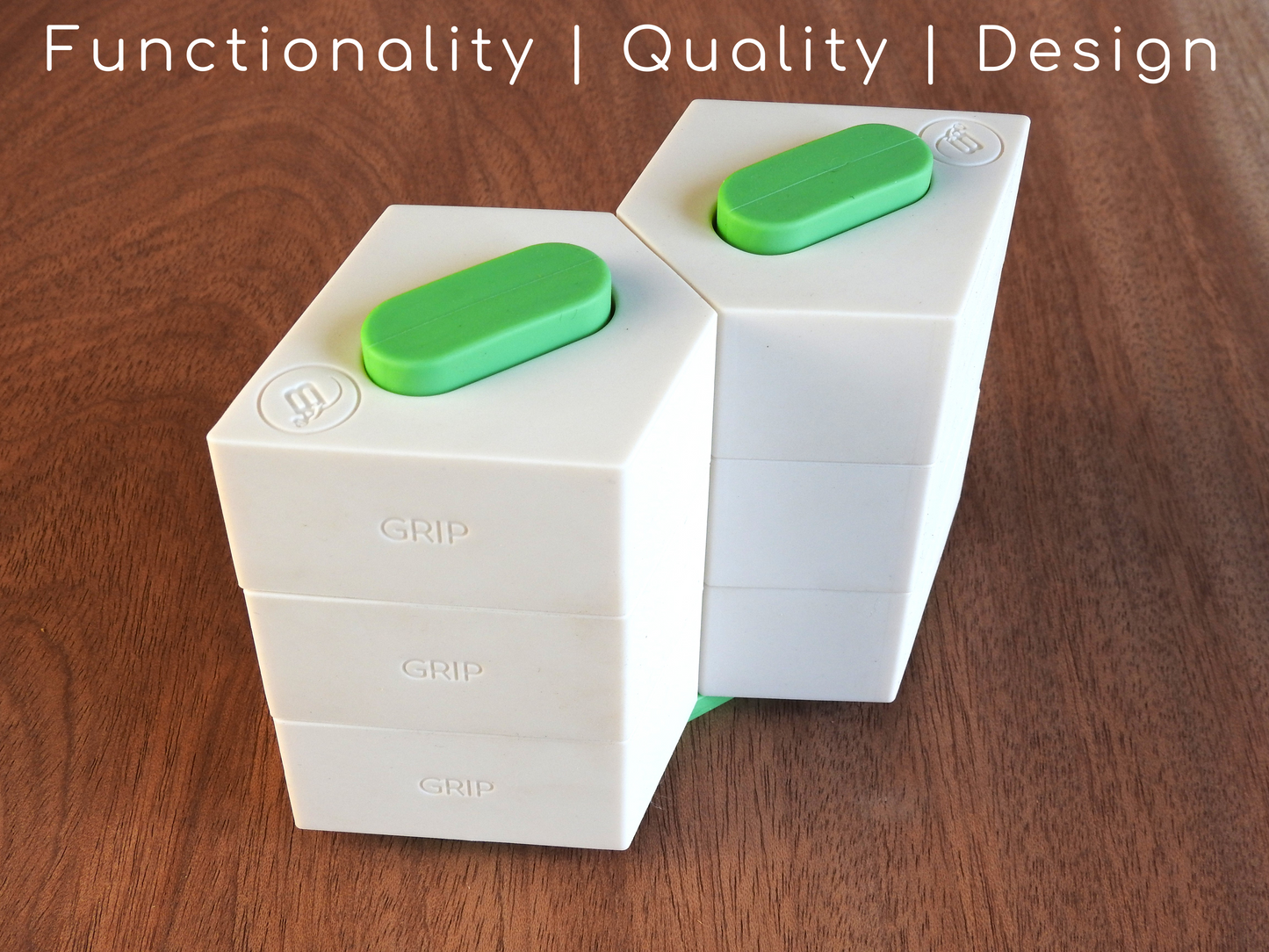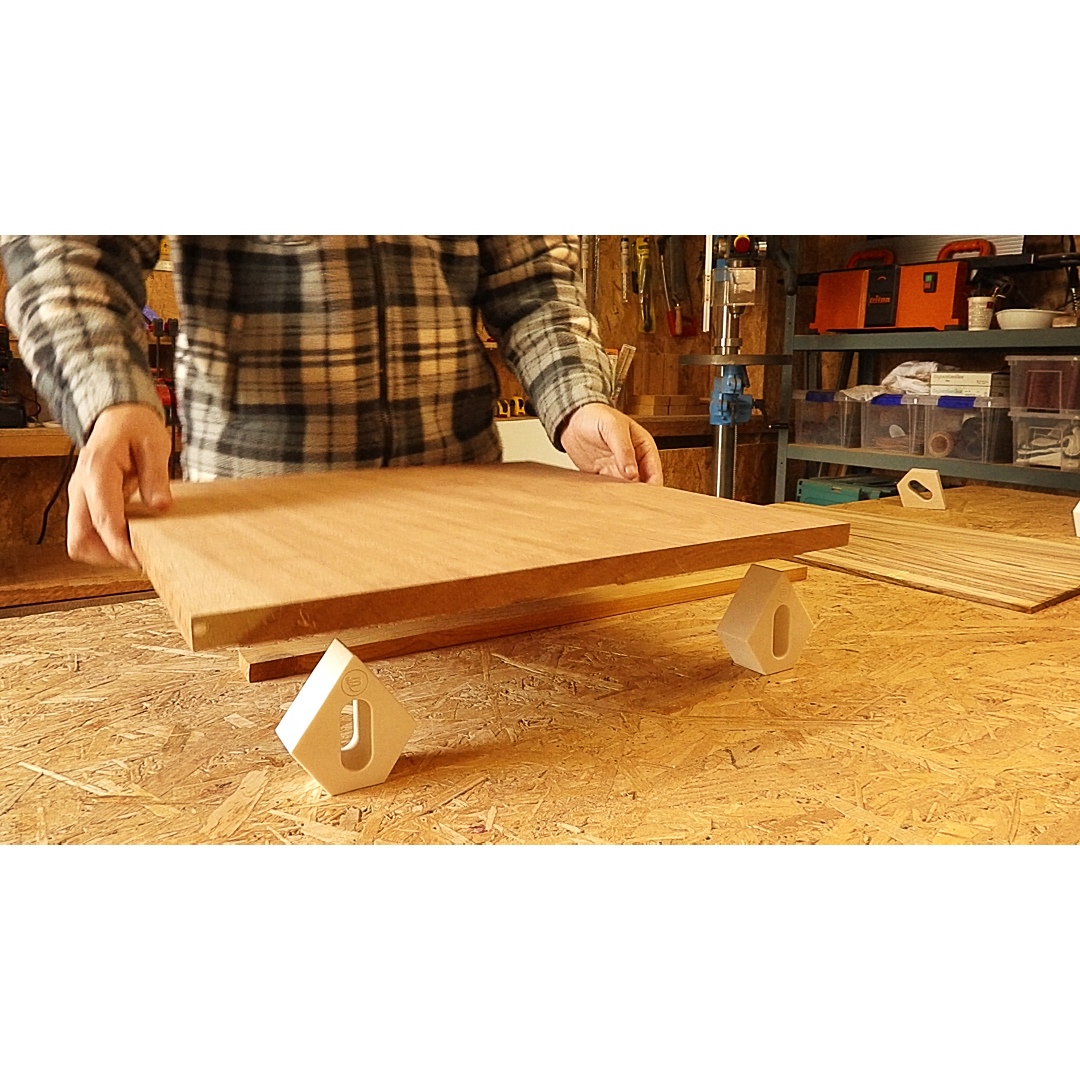
How Long Should Wood Glue Be Clamped?
Share
Guitar builder’s take on glue-up timing, best practices, and pro tips
When you're aiming for a clean, strong joint in your woodworking project, clamping time can make or break your result. Knowing how long to clamp wood glue is crucial. Let’s break it down using manufacturer guidelines, real-world experience, and some professional insight from a full-time luthier and woodworker.
The Quick Answer
For most wood glues:
Clamp Time: 30 minutes to 2 hours
Full Cure Time: 24 hours before stressing the joint
But this varies based on the glue type, temperature, humidity, wood species, and joint quality. Let’s focus on the two most common glues used by serious woodworkers: PVA and polyurethane.
PVA (Polyvinyl Acetate) Glue – e.g. Titebond I, II, III
PVA is the go-to glue for most woodworking applications — from furniture to lutherie.
Recommended clamp time:
30–60 minutes under consistent pressure at around 70°F (21°C) and 50% humidity
Full cure:
Allow at least 24 hours before applying significant stress, sanding, or finishing
Pro tip:
I usually leave joints clamped for at least two hours, and overnight when I can. Especially with tonewoods or mission-critical joints (like guitar necks or braces), it’s worth being conservative. Moisture and temp swings in the shop can easily slow down curing, so plan for it but to be safe, I never unclamp a piece I'm about to immediately work on if its been less than 2 hours.
Polyurethane Glue – e.g. Original Gorilla Glue
Polyurethane glue is excellent for bonding oily or exotic woods and materials that PVA struggles with.
Recommended clamp time:
1 to 2 hours, ideally at 68–72°F (20–22°C) with moderate humidity
Full cure:
24 hours minimum
Key differences:
- It expands as it cures, so don’t over-apply
- Needs moisture to activate properly (dampen one surface lightly before gluing)
- Creates a foam-like squeeze-out — easy to sand, but messy if uncontrolled
Pro tip:
Use a slightly stronger clamping pressure to counteract the expansion.
Factors That Affect Clamping Time
Temperature – Cold slows curing. Below 50°F? Expect longer clamp times.
Humidity – Polyurethane needs some moisture; PVA hates too much. Know your glue.
Wood Species – Dense or oily woods take longer and may need special prep (see next section)
Joint Quality – The tighter and flatter the joint, the less glue you need, and the more reliable the bond.
How to Prep Oily Woods Before Gluing
If you're working with oily hardwoods — like rosewood, cocobolo, teak, or certain walnuts — surface oils can interfere with glue adhesion.
Wipe with solvent
Use acetone or naphtha to remove surface oils right before gluing. Let it dry completely.
Consider polyurethane
Polyurethane glue often performs better on oily woods than PVA. It chemically cures and can bond through some surface oil.
Pro tip: Sand just before glue-up
Freshly sanded surfaces bond better. Glue within 30 minutes of sanding if possible.
What to Do If You Need to Raise Your Workpiece for Clamping
A common problem during glue-ups is needing to get clamps underneath your workpiece. If it’s sitting flat on the bench, there’s no room for the lower jaw of your clamp — especially with F-style or bar clamps.
Options:
- Use Bench Critters Gecko Blocs
- Scrap wood risers
- Temporary stands
- Height-adjustable work supports
Best option: Gecko Blocs
We designed Gecko Blocs to solve this exact problem. Each set offers three different height settings, so you can raise your workpiece just enough to:
- Slide even your largest clamps underneath
- Avoid clamping into your bench
- Create space for cauls or stabilizers above and below
This not only gives you access — it helps create cleaner glue joints and faster setups. No wobble, no improvising.
Don’t Forget: Pressure Matters
You want squeeze-out — not glue starvation. Don’t overtighten clamps to the point that you push all the glue out of the joint. Use firm, even pressure across the surface.
Pro Tip: I will usually tighten my clamps using as much pressure as i can get with just my thumb and index finger. That's less pressure than i see most woodworkers using on youtube but if your joints are perfect then this is all the pressure you'll need and you wont squeeze all the glue out of that joint, making it weaker.
Final Thoughts
So, how long should wood glue be clamped?
For PVA: at least 30–60 minutes. For polyurethane: 1–2 hours. But if you’ve got the time, double it — especially in less-than-perfect shop conditions.
Use the right glue for your wood, prep oily species with care, and set yourself up for success with smart clamping strategies.
Need help with that last part? Check out the Gecko Bloc Set — designed by a woodworker (me!) to make glue-ups easier, faster, and cleaner for intermediate to pro-level builders.













